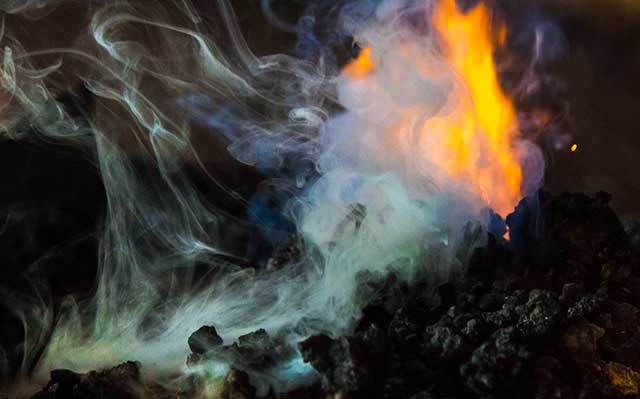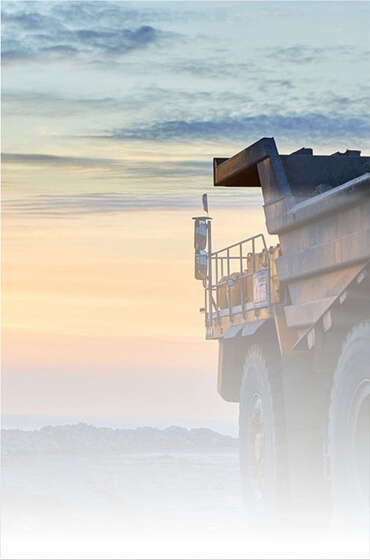The audit report revealed instances of mines not installing air quality monitoring stations, discharging contaminated water into water bodies and operating without valid environmental clearance.
India's coal production was under fire because it was a polluting source of energy generation and, in some cases , did not comply with environmental safeguards. Giving credence to this charge, the latest report by India's Comptroller and Auditor General (CAG) identified gaps in how environmental safety is managed by Coal India Limited (CIL) and its subsidiaries, which account for the majority — about 83%—of the country's total coal production.
The report 'Assessment of the Environmental Impact of Mining Activities and its Mitigation in Coal India Limited and its Subsidiaries' was presented to Parliament on 11 December 2019. Of the 500 mines and 15 washers (under CIL) in India, 41 mines and two washers (representing 8 percent of the mines and 13 percent of the washers, respectively) were examined in detail. The performance audit was carried out as most of India's coal reserves are located in river basins rich in forest cover and are habitats of valuable wildlife and indigenous tribal communities, the report noted.
The report noted that coal mining at these specific locations involved serious environmental and social concerns, including air , noise, water pollution , land degradation and far-reaching consequences for local biodiversity. The audit, which was carried out for the period from 2013-14 to 2017-18, noted that the Ministry of Environment, Forestry and Climate Change (MoEFCC) stipulated from time to time that a well-defined environmental policy, duly approved by the Board of Directors ( BoD) of the subsidiaries, must be in place.
“Six out of seven coal producing subsidiaries of CIL did not formulate a policy as mandated. Further, although guidelines containing the responsibility and delegation at different levels in environment discipline were formulated by CIL, the same was not dovetailed in their operating manual by the subsidiaries,” said the CAG report.
The state-owned coal mining company, which came into being in November 1975, is today the world's largest coal producer. It is responsible for about 83% of India's total coal. This report is significant, as coal is expected to continue to be the mainstay of India's energy basket for at least a few decades, and the violation of CIL standards will only add to the already heavy pollution burden of the country.
For example , in September 2019, the Indian Minister for Coal, Mines and Parliamentary Affairs, Pralhad Joshi, said that they were undertaking steps to increase domestic coal production from the current level of 730 MT to 1149 MT by 2023, thereby eliminating coal imports except for limited non-substitutable imports.
The CAG report also suggested that CIL 's subsidiaries could adopt a two-pronged pollution control strategy. “The capital works relating to pollution control measures may be completed expeditiously. The plantation works may also be taken up simultaneously and aggressively to increase green cover and restore ecological balance in and around the mines,” it said.
As per the report, the Ministry of Coal accepted the recommendations of CAG while ensuring that appropriate action was taken and stated that these would also apply to the entire coal sector, which included companies other than CIL.
Coal mines that do not comply with air quality monitoring standards
High air pollution is one of the greatest consequences of the high rate of coal production. The CAG report also looked at this point and noted that, according to the environmental management plan of the mines, the required number of air quality monitoring stations as specified in the environmental clearance were to be established in the core zone (within three kilometers of the mining area) and buffer zone (within 10 kilometers of the mining area) of each mine for air quality monitoring.
“In 12 of the sampled 30 operating mines/washeries, against 96 monitoring stations, only 58 (60%) were established. Continuous ambient air quality monitoring stations were to be installed and equipped with connectivity to the server of State Pollution Control Boards (SPCB) to facilitate online monitoring of ambient air quality. 12 mines of four subsidiaries did not comply with these directives,” said the report.
Highlighting the irregularities, the report stressed that the National Environmental Air Quality Standards 2009 (NAAQS) notified by the MoEFCC in November 2009 required the monitoring of Particulate Matters (PM10 and PM2.5) on an annual and 24-hour basis. “Although these norms came into effect from November 2009, ambient air quality was monitored in Eastern Coalfields Limited (ECL) only from May 2015 for the cluster of mines. Further, six locations of ECL were monitored only till March 2015, although PM10 levels in these stations always exceeded the prescribed norm under NAAQS. The concentration of PM10 and PM 2.5 in the air exceeded the levels prescribed in NAAQS in six mines across three subsidiaries during 2013-18,” said the report.
These irregularities highlighted by CAG are also contrary to the basic objectives of the latest corporate environment policy of CIL.
In its Corporate Environment Policy 2018, some of the objectives identified by CIL are to conduct mining and associated operations in an environmentally responsible manner, prevent environmental pollution by continuous monitoring and take appropriate environmental protection measures, implement environmental management plans in all of its mines / projects effectively to mitigate pollution.
“There have been years of continuous scrutiny and there is still no improvement with CIL. Previously, in 2011, CAG had highlighted that Coal India is operating mines without environmental clearance. In 2015, the audit’s focus was on Corporate social responsibility (CSR). CAG at various instances has been highlighting issues with CIL. This CAG report is very comprehensive and it highlights shortcomings of CIL on environmental performance in a comprehensive manner,” Sundaram Ramanathan, deputy programme manager (energy thermal) at the Centre for Science and Environment, told Mongabay-India.
“However, the recommendations to act upon are brief and it is not sufficient to enable action. It is also worrisome that despite CAG’s continuous audit and highlights of deficiency CIL is not taking any steps to rectify and improve its performance,” said Ramanathan.
Water pollution standards are being openly violated
As far as water pollution is concerned, the audit report noted that in 2013-18, out of 28 mines selected for audit, pollutants exceeded the prescribed limits in eight mines across three subsidiaries. It also noted that during 2013-18, 6.2 million (62 lakh) kilolitre (KL) of untreated water was discharged into nearby groundwater-contaminated water bodies by Mahanadi Coalfield Limited (MCL), another subsidiary of CIL.
As per the standards for the mitigation of water pollution caused by mining activities, measures such as the installation of wastewater treatment plants for the elimination of pollutants from mine water as well as stormwater and wastewater from workshops, the installation of a wastewater treatment plant (STP) for the treatment of effluents from residential mining colonies are to be adopted.
The callousness can be seen from the CAG report which revealed that the "STP installed at MCL's Lakhanpur mines had been inoperative since May 2008" and that MCL had issued a work order only in August 2018 (after a delay of 10 years) for rectification at a cost of Rs 9,83 million ( Rs 98,38 lakh). “The work is still to be completed (November 2018). Meanwhile, the sewage water remained untreated,” the report said.
Other CIL subsidiaries such as Central Coalfields Limited (CCL), Bharat Coking Coalfields Limited (BCCL) and South Eastern Coalfields Limited (SECL) continued to use groundwater for their mining operations without obtaining a No-Objection Certificate (NOC) from the Central Ground Water Authority.
In one case, the report noted that, due to the lack of a "mechanical brooming / industrial cleaner" in the Piparwar mine, the spillage from overloaded trucks accumulated along the side of the Safi River Bridge (Jharkhand) and eventually drains into the river, contaminating it. Similarly, the discharge of the Kathara CCL washer was found to contaminate the Damodar River (Jharkhand).
In addition to finding vulnerabilities in air and water pollution related to the safeguards of CIL and its subsidiaries, the audit report found several other environmental infringements related to ash dumping, fire management and environmental clearance.


































